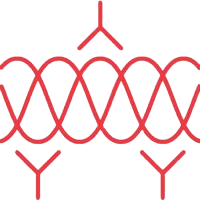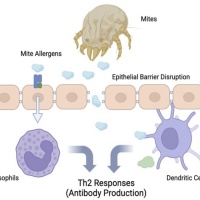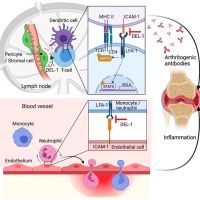
New citations for our products published in August 2025
Chondrex, Inc. is excited to introduce new citations for our products published in August 2025.Please refer to the following articles as references for your studies.Cat # Products Article Title 2036Mouse Anti Mouse Type II Collagen IgG Antibody Assay KitTherapeutic effects of CTLA4Ig-overexpressing mesenchymal…...3004Mouse Anti OVA IgE Antibody Assay KitMethylated CpG ODNs from Bifidobacterium…...3010Mouse Serum Anti OVA IgE Antibody Assay KitSelective PAR2 Inhibition Attenuates... Read More

New citations for our products published in November 2025
Chondrex, Inc. is excited to introduce new citations for our products published in November 2025.Please refer to the following articles as references for your studies.Cat #ProductsArticle Title3011Mouse Anti OVA IgG Antibody Assay KitHydrophobic sponge spicule-mediated transdermal vaccination…...6013Rat Type I Collagen Detection KitAnastomotic leakage prevention using dry-preserved…...6017Hydroxyproline Assay KitColony-stimulating factor 3 as a…...6018Type II Collagen Detection Kit Multi SpeciesTissue Engineered Elastic... Read More

New citations for our products published in October 2025
Chondrex, Inc. is excited to introduce new citations for our products published in October 2025.Please refer to the following articles as references for your studies.Catalog # Products Article Title 1061Immunization Grade Chick Type I CollagenExtraction and Analysis of Type…...1203Cell Culture Grade Porcine Type I CollagenZNF469 promotes extracellular matrix production…...3005Mouse Total IgE (IgEa and IgEb) Detection Assay KitSynergistic Exacerbation of Allergic Inflammation…...3010Mouse Serum Anti-OVA... Read More

New citations for our products published in July 2025
Chondrex, Inc. is excited to introduce new citations for our products published in July 2025.Please refer to the following articles as references for your studies.Cat # Products Article Title 3012 Mouse Albumin Detection Kit Autoantibodies Targeting Vinculin Reveal Novel…... 4014 TRITC Dextran 70 kDa Apical size reduction by macropinocytosis…... 6010 HMGB1 Detection Kit Long-Lived Immunogenic Cell Death Induced…... 6022 Glycosaminoglycans Assay Kit Kartogenin Induces Chondrogenesis in Cartilage…... 6705 Mouse Interleukin 1beta IL 1beta Detection Assay Kit Extracellular... Read More

New citations for our products published in May 2025
Chondrex, Inc. is excited to introduce new citations for our products published in May 2025.Please refer to the following articles as references for your studies.Cat # Products Article Title 1062 Immunization Grade Bovine Type I Collagen Panaxynol from dietary sources modulates…... 3005 Mouse Total IgE IgEa and IgEb Detection Kit Mechanistic insights into ozone-induced asthma…... 3010 Mouse Serum Anti OVA IgE Antibody Assay Kit Mechanistic insights into ozone-induced asthma…... 3010 Mouse Serum Anti... Read More

New citations for our products published in April 2025
Chondrex, Inc. is excited to introduce new citations for our products published in April 2025.Please refer to the following articles as references for your studies.Cat #ProductsArticle Title1002ELISA Grade Bovine Type I Collagen, 0.5 mg/ml x 1ml, with 10X BufferAntibody specifically binding to ICAM-1…...3012Mouse Albumin Detection KitScreening and Identification of Novel…...3020Rat Albumin Detection KitScreening and Identification of Novel…...3037Mouse Anti House Dust... Read More

New citations for our products published in September 2025
Chondrex, Inc. is excited to introduce new citations for our products published in September 2025.Please refer to the following articles as references for your studies.Catalog # Products Article Title 3031 Mouse Anti dsDNA IgG Antibody Assay Kit Establishment of a Systemic Lupus…... 4013 FITC Dextran 4 kDa Construction of an engineered Escherichia…... 6010 HMGB1 Detection Kit Inhibition of PRC1 elicits immunogenic…... 6026 Bromophenol Blue BPB Protein Assay Kit Relationship Between Quantitative MRI and…... 7001 Complete Freund... Read More

Regarding Tariffs: All Chondrex, Inc.'s Products Are Manufactured in the USA
Dear Customers, Due to recent news about international trade and tariffs, especially between the USA and China, we would like to explain how these changes relate to our products and supply chain. We understand that such news may raise concerns about product origin, shipping delays, and pricing stability. We want to assure you that all our products (except for Tdb products) are... Read More

New citations for our products published in December 2024
Chondrex, Inc. is excited to introduce new citations for our products published in December 2024.Please refer to the following articles as references for your studies.Cat #ProductsArticle Title2012ELISA Grade Bovine Type II CollagenKunduan Yimu Decoction affected Th17/Treg?...2012ELISA Grade Bovine Type II CollagenGuizhi Shaoyao Zhimu decoction inhibits?...2012ELISA Grade Bovine Type II CollagenJinwu Jiangu capsule attenuates rheumatoid?...2012ELISA Grade Bovine Type II CollagenMacrophage corpses... Read More

New citations for our products published in February 2025
Chondrex, Inc. is excited to introduce new citations for our products published in February 2025.Please refer to the following articles as references for your studies.Cat #ProductsArticle Title1005ELISA Grade Human Type I CollagenSynthesis and Characterization of Glycosaminoglycan…...2011ELISA Grade Chick Type II CollagenInvestigating the molecular mechanism of…...2011ELISA Grade Chick Type II CollagenSuberosin attenuates rheumatoid arthritis by…...2012ELISA Grade Bovine Type II CollagenThe interaction... Read More

New citations for our products published in January 2023
Chondrex, Inc. is excited to introduce new citations for our products published in January 2023.Please refer to the following articles as references for your studies.Cat#ProductArticle Title2022T Cell Grade Bovine Type II CollagenPulsed Electromagnetic Field (PEMF) Treatment Ameliorates Murine Model of Collag .7001Complete Freund's AdjuvantA green-lipped mussel prevents rheumatoid arthritis via regulation of inflammato .7001Complete Freund's AdjuvantPeptide-anchored neutrophil membrane-coated biomimetic nanodrug for targeted... Read More

New citations for our products published in September 2024
Chondrex, Inc. is excited to introduce new citations for our products published in December 2024.Please refer to the following articles as references for your studies.Cat #ProductsArticle Title2012ELISA Grade Bovine Type II CollagenKunduan Yimu Decoction affected Th17/Treg?...2012ELISA Grade Bovine Type II CollagenGuizhi Shaoyao Zhimu decoction inhibits?...2012ELISA Grade Bovine Type II CollagenJinwu Jiangu capsule attenuates rheumatoid?...2012ELISA Grade Bovine Type II CollagenMacrophage corpses... Read More

New Mouse Anti-House Dust Mite Der p2 Antibody ELISA Kits
House dust mite (HDM) is one of the most common asthma allergens, affecting up to 85% of asthma patients (1). More than 20 types of HDM allergens in Dermatophagoides pteronyssinus (Der p) are defined based on sequential and functional homologies. Among these HDM allergens, group 2 (Der p2) is a myeloid differentiation factor 2-related lipid-recognition protein. Der p2 can activate... Read More

New Mouse IgE Antibodies against Peanut Allergens for In-vivo and In-vitro Studies
New Mouse IgE Antibodies against Peanut Allergens for In-vivo and In-vitro Studies Read More

Anti-inflammatory DEL-1 in Mouse Arthritis Models
DEL-1 is a protein known to regulate inflammatory cell recruitment and acts as an anti-inflammatory. The research group tested the effects of DEL-1 in collagen and antibody induced arthritis models. The group found that there was a significant difference in arthritis outcome between DEL-1 overexpression (animals are protected from arthritis) to control mice. In addition, if the mice are deficient from DEL-1, arthritis is exacerbated. DEL-1 could be an important protein for therapeutic treatment of arthritis. Read More

Journal Club #11: Elovanoids as a Potential Anti-Allergen in an In Vitro HDM Model
HNEpC were challenged with different stressors or HDM extract for 30 minutes, after which they were then treated with elovanoids. Cytotoxicity, cell viability, and the expression of pro-inflammatory cytokines and chemokines in the cell supernatant were evaluated. The study concluded that the HDM challenge in the cellular experimental allergy model induced expression of several key cytokines and chemokines linked to respiratory diseases and the treatment with elovanoids reduced cell toxicity and pro-inflammatory cytokine levels while increasing cell viability and anti-inflammatory cytokine levels. Overall, elovanoids might constitute a therapeutic option in the prevention and treatment of allergies to HDM. Read More

Journal Club #10: The Roles of High Mobility Group Box 1 (HMGB1) and Toll-like Receptor 4 (TLR4) in Arthritis-Induced Pain in the Collagen-Antibody Induced Arthritis Model
The collagen antibody-induced arthritis (CAIA) model was used for investigating if blockade of peripheral HMGB1 attenuates pain-like behavior in a sex-dependent fashion. Both male and female CAIA mice revealed high HMGB1 mRNA levels in the ankle joints. Administering HMGB1 neutralizing antibodies failed to reduce arthritis severity in both male and female mice; however, it did significantly reverse CAIA-induced mechanical hypersensitivity in male mice. In addition, the differences in responses between sexes were evaluated by measuring cytokine levels (TNF, IL-6, CXCL1 and CXCL2) from cultured macrophages treated with HMGB1 and cytokine mRNA levels (TNF, IL-1b, IL-6, CCL2, CXCL1, and CXCL2) in paws which received HMGB1. Read More

Journal Club #9: Evaluating Decellularized ECM Hydrogels to Support Brain Organoid Culture
The effectiveness of decellularization (DC) process in removing cells from the ECM by chemical, physical, and enzymatical methods were investigated using several assays. DC protocols were evaluated for their effectiveness in removing blood and other soluble materials and optimized after comparing combinations of DNA-removing enzymes with different detergents such as SDS, Triton X, and sodium deoxycholate (SDC). SDC proved to be the most suitable DC detergent after evaluating the quantified collagen and GAG levels in the decellularized ECMs. Read More

Assaying GAGs, DNA, and total collagen from cells in hydrogels
There are several sample preparation protocols for glycosaminoglycan (GAG) analysis, such as guanidine hydrochloride (GuCl) extraction, guanidine thiocyanate (GITC) extraction, and enzymatic digestion using papain or pepsin. Hoemann et al. confirmed that the papain digestion protocol is more effective than the GuCl or GITC extraction protocols for analyzing GAG, DNA, and collagen content in cartilage and repair tissues. Read More

Journal Club #8: The Role of Epitope Retrieval in the Production of Anti-Glomerular Basement Membrane Antibodies in the Antibody-Associated Vasculitis Model
A rat AAV model in WKY rats was used for studying the antigen retrieval inducing the anti-?3(IV)NC1 antibodies. The anti-?3(IV)NC1 mAb failed to bind to GBM and the basement membrane of Bowman’s capsule in formalin-fixed, paraffine-embedded normal kidney sections without antigen retrieval in IHC. However, the mAb bound to retrieved antigens with a heat treatment under acidic conditions, a treatment of proteases from S. griseus, or neutrophil elastase, but not with a heat treatment under neutral conditions and alkaline conditions. This suggested that proteases released from neutrophils activated by ANCA may digest type IV collagen and result in the reveal of ?3(IV)NC1. On the other hand, in the AAV model immunized with human myeloperoxidase and received phorbol myristate acetate (PMA) which induces Interstitial tubular damage, two out of twelve rats developed anti-GBM antibodies. Read More